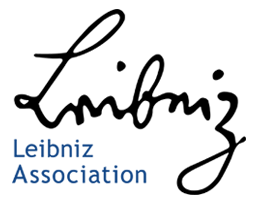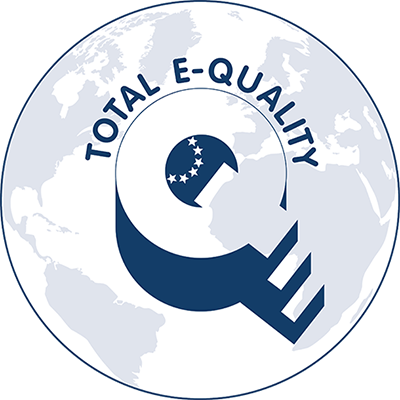Thermal Plasma Technologies
The research focus is on thermal plasmas and their technological application. Thermal plasmas appear in various technological areas. These include discharge phenomena in high-voltage components of the electrical grids, switching processes in electrical circuits at all voltage levels and joining, cutting and filling processes in metal processing. Recently, thermal plasmas are also being observed as an alternative for hydrogen production and emission-free disposal of plastics and composites. The scientific challenge here is to gain a fundamental knowledge of the physical mechanisms of the interaction between arc plasmas and adjacent materials (walls, electrodes) as well as the interaction of the arc as a current-carrying part with the electrical circuit. Combining various diagnostic methods, space- and time-dependent plasma parameters such as temperature, composition, pressure and velocity are obtained.
The development of optical diagnostic methods, together with modelling and simulation, forms the core of the research programme.Pyrometry, emission and absorption spectroscopy as well as high-speed imaging are used for quantitative diagnostics.Detailed knowledge of the properties of the arc and adjacent surfaces enable the development of control and monitoring tools and favour the formulation of new approaches for the improvement of existing equipment concepts and processes. This ranges from the urgent need to increase the reliability of electrical components and energy storage in the context of the energy transition to the qualification of conventional and generative manufacturing processes for Industry 4.0.
APPLICATION FIELDS
Detailed analysis and deeper understanding of the basic plasma processes is the basis for further development and optimization of arc-based switching devices. Switching performance at high electrical currents at all voltage levels requires the safe operation of power system components. The development of switching devices at up-to-date technical level taking into account environmental aspects is no longer conceivable without physical modelling of the functional component plasma and accompanying experimental studies.
For the analysis of complex arc dynamics combinations of optical emission spectroscopy, optical absorption spectroscopy and high-speed camera techniques are used. For the determination of plasma parameters, like e.g. temperature and composition, combination of complementary methods, like e.g. analysis of atomic and ionic line radiation and video spectroscopy have been developed as a general solution approach, allowing for the study of broader spatial regions and extended temporal ranges.
The novel diagnostic methods of arc plasma lead to a deeper understanding of the physical processes and as a consequence to development of improved switching concepts and operation principles. The use of such methods for parameter and design optimization saves significantly time and costs in the development of switchgears.
An important prerequisite for achieving climate neutrality is emission-free hydrogen production as a promising energy storage element Here, plasma-assisted processes can make a significant contribution to increasing the efficiency of hydrogen production due to their high-energy thermal processes, as these processes require about one fifth of the primary energy compared to conventional water electrolysis per kilogram of produced hydrogen. In addition, plasma-based processes enable the production of synthesis gas for CO2-neutral fuels as well as the production of high-quality bound carbon for industrial manufacturing processes.
The investigation of these high-energy chemical processes is enabled by the application of combined diagnostic methods and long-term monitoring techniques. Plasma properties (temperature, species, etc.) are determined by the complementary application of experimental and mathematical modelling techniques. Both the stable arc behaviour and the interaction of the plasma with the feedstock and intermediates are crucial for optimising high-temperature processes and increasing effectiveness.
The experimental diagnostics is supported by numerical simulation and modelling. Despite established technologies and long-time research work, the detailed knowledge about the specific properties and physical mechanisms in the arc plasmas is still missing. This hinders technological innovations. Detailed models, which include precise description of all relevant processes, give the missing information and corresponding knowledge. Continuous improvement of non-equilibrium models, particularly by taking into account departures from thermal, chemical and ionization equilibrium leads to close agreement between theory and experiment and, therefore, to the development of efficient and realistic simulation tools which can be used for design and parameter optimization.
Numerical simulations help to accelerate the development of devices and reduces the corresponding costs.
An improved modelling and new diagnostic methods of arc plasmas and adjacent areas (electrodes, walls, cold gas) leads to a deeper understanding of the physical processes and as a consequence to development of improved switching and welding concepts and operation principles. Increase of the stability and process reliability, as well as the efficiency of the welding process are added values through research.
The light emitted by plasma contains valuable information about its composition, temperature and pressure. The diagnostics of spatial and temporal evolutions of these parameters provides the knowledge about the plasma itself, its interaction with surrounding materials as well as the impact on the environment and on human health. In-situ analysis of this data allows for precise process control leading to higher process efficiency, operation safety and diminution of environmental impact. An example are the stronger requirements for reduction of harmful emissions in arc welding and switching applications. Appropriate improvement can be achieved by application of optical sensors. Also the studies in the field of light sources devoted to the aspects of health and human well-being that play, for instance, a special role in the case of night work, have been performed.
Spectrally sensitive optical sensors are used for optimization of welding process in sense of weld quality and material consumption. The monitoring of harmful emissions during welding or switching operations can be performed for improvement of safety issues. Implementation of spectral control of illumination minimize the biological impact on the soil and marine fauna, and provides an accelerated physiological adjustment to shift work during the night, contributing to human health and safety by influencing the human factor.
Partial discharges inevitable occurs in all applications of high-voltage engineering leading to degradation and failure of high-voltage apparatus, such as power transformers, underground power cables, insulation of power electronics, components of power transmission lines. Understanding of basic physical phenomena is a key for ageing assessment and lifetime prediction of high-voltage components.
Development of reliable lifetime prediction and PD diagnostic tools is highly desired for operating control of high-voltage apparatus and construction of sustainable power networks.
For the analyses of partial discharges wide band electrical diagnostics (> 1GHz) and sensitive optical diagnostics, e.g. iCCD cameras, photomultiplier and setup for optical emission spectroscopy, is applied. The correlation between electrical and optical signals for typical defects in power apparatus is currently under investigations.
Conventional thermal recycling processes (pyrolysis, incineration) are only suitable for the treatment of special and composite waste to a limited extent and with high emissions, as usually only the binding plastic matrices are thermally recycled. Since the degradation of inert glass and carbon fibres requires high temperatures (above 2,000°C), plasma-based processes can offer a real alternative due to the very high temperatures (above 5,000°C) and the ability to emissions-free disposal. In addition, feedstock products such as synthesis gas (H2/CO) for the production of fuels and recyclables as well as silicates for the chemical and construction industries can be generated.
The focus of the investigation is on determining the necessary process conditions using thermal plasmas, including the characteristics of the energy sources and product treatment. Here, the application of optical diagnostic techniques and FEM-simulation for process optimisation and energy efficiency as well as the consideration of environmental impact and feasibility contribute to the scientific progress.
Conventional welding processes require noticeable innovations in order to remain competitive as a cost-effective joining technology considering new materials and increased quality requirements. Furthermore, the process safety and efficiency are the necessary features for modern technologies. Such innovations can be achieved only on the basis of a detailed understanding of the mechanisms of action in the arc that previously did not exist sufficiently.
Qualification of optical diagnostics methods for the measurements on non-symmetric objects and development of corresponding data processing methods is necessary. Here, the tomographic reconstruction based on the use of several high-speed cameras complementary to OES diagnostics in combination of iterative data evaluation procedure is the right solution.
For optical investigations on submerged arc welding process adapted setup for time and space resolved optical analysis by high-speed imaging and high-speed video spectroscopy has been developed. The process becomes optical accessible through a tiny metallic tube which is filled with non-reactive gas at specified pressure.
The results from the research on the fundamentals have been used for further development of innovative process concepts such as laser-assisted arc welding and submerged arc welding. Increase the stability and process reliability, as well as the efficiency of the welding process are added values through research.
PROJECT TOPICS
For further improvement of process efficiency and reliability in arc based technologies, such as, for example arc welding, gas and vacuum circuit breakers detailed knowledge about the arc plasma properties and dynamics is necessary. Special attention must be paid to the regions adjacent to the arc column, like e.g. electrodes and walls, since the interaction of the arc plasma with surrounding material is an important part of every arc based process. The analysis of the physical processes inside the arc column and in the regions where the arc interacts with surrounding materials by means of optical diagnostics and numerical modelling is in the focus of core-funded project. For the determination of plasma parameters, like e.g. temperature and composition, combination of complementary OES methods, like e.g. analysis of atomic and ionic line radiation is applied as a general solution approach, allowing for the study of broader spatial regions and extended temporal ranges. High-speed camera based tomographic reconstruction is applied for the measurements on non-symmetric arcs. Absorption spectroscopy using appropriate light sources is a suitable method for study of colder plasma regions and arc surrounding gas.
Project manager:
Dr.- Ing. Diego Gonzalez
Phone: +49 3834 - 554 3859
diego.gonzalezinp-greifswaldde
Fast DC hybrid circuit breaker for use in industrial and on-board networks for system integration of renewable energies and for energy recovery from electrical drives
The current restructuring of the German energy supply is dependent on the increasing use of renewable energy sources. This is currently leading to an increasing use of combined AC / DC network structures. In addition to the integration of decentralized, time-fluctuating plants and systems, multidirectional power flows must be efficiently fed into industrial networks and distributed in such networks. The aim of the "AutoHybridS" research project is to secure the demand-oriented distribution of energy on bus systems with nominal voltages of up to 850 V DC. For this purpose, extremely quick-release, inexpensive, autonomous switching devices for maximum system stability and security of supply are developed and tested. These should not only ensure a safe and selective connection and disconnection of the electrical consumers, but also enable the integration of renewable energy sources and storage easily and flexibly.
Project manager:
Dr.- Ing. Diego Gonzalez
Phone: +49 3834 - 554 3859
diego.gonzalezinp-greifswaldde

The interdisciplinary importance of arc plasmas is today unequivocally demonstrated in many industrial processes and devices. However, the understanding of the physical mechanisms in electric arcs and their complexity is still incomplete. Assumptions such as equilibrium conditions, drift-diffusion approximation, simple form of Ohm’s law among others are often made in order to simplify the description of the strongly coupled and non-linear physical problem. These assumptions fail in particular at low current (below 50 A) and short arc length (below 2 mm).
This project is aimed at advanced non-equilibrium description and modelling of low-current electric arcs of short length and their interaction with the electrodes. A thorough analysis of the physical processes and arc plasma properties will provide knowledge about the spatial and temporal behavior of the arc when its length is reduced to only a few millimeters. Project achievements are expected to be advantageous from a technological point of view: established processes like short and micro arc welding, new processes like generative manufacturing with arc welding devices, and the development of low-voltage contacts and switching devices might benefit from new insights and modelling capability.
Funded by DFG
Project manager:
Dr. Margarita Baeva
Phone: +49(0) 3834 554 3823
baevainp-greifswaldde
Laser-induced breakdown spectroscopy (LIBS) is an established diagnostic tool that is used in many applications for material analysis. A new area of application for LIBS is the exploration of raw materials in the deep sea. LIBS could help to reduce adverse effects on the environment during exploration of raw materials, by finding promising deposits in a targeted manner and with minimal intervention. Together with the project partner Laser Zentrum Hannover, the physical processes are being investigated and the technology is being optimized, so that the diagnostics can be used reliably at the very high ambient pressures in the deep sea of up to 60 MPa. It is of particular interest how the essential process parameters affect the generated cavity and the plasma. Furthermore, it is important to define an optimum time window for the emission of line radiation, which is of interest for elemental analysis by LIBS in the deep sea. With this knowledge, conclusions will be drawn on the required technique, appropriate evaluation methods, and achievable accuracy for LIBS in the deep sea.
Project manager:
Dr. Steffen Franke
Tel.: +49(0) 3834 554 3839
steffen.frankeinp-greifswaldde
Constriction of discharge plasma is an important physical phenomenon, which has the relevance to various applications. The fundamental processes leading to the constriction of diffuse plasma have different nature for various types of discharge. In case of glow discharges increasing impact of stepwise processes, approaching of electron velocity the equilibrium distribution and increase of gas temperature (thermalisation) cause the formation of thin plasma channel, as well as the formation of localized attachment on the electrodes - cathode and anode spots. The constriction mechanisms in the vacuum arcs are quite different. The discharge medium formed by electrode material evaporation is already hot enough; the plasma species have significant velocities. Furthermore, the cathode spots are present from the beginning of the discharge formation, as they are the plasma source. In this situation, two phenomena can influence the constriction behavior, namely the self-induced magnetic field and the electrode processes (evaporation).
The arc constriction has different meaning in various applications. This phenomenon is highly undesirable in low power operating devices (thrusters, on-load tap changers), surface coating devices, circuit breakers with axial magnetic field contact systems. In other applications, like e.g. circuit breakers with transversal/radial magnetic field contact systems and vacuum spark gaps an arc constriction a standard working situation and it is desirable to control both the DFG form 53.01– 05/16 page 2 of 17 constriction behavior and the arc motion in order to reduces the local thermal load of the electrode.
The present project is devoted to study of constriction processes in high-current vacuum arcs. Detailed investigations will be performed for dynamics, spatial structure and charge state distribution in arc plasma column during its constriction. The role of various factors such as electrode material, geometry of the discharge gap, self-induced and external magnetic fields will be analyzed. Parameters of the post-arc plasma, in particular vapor density, expansion of the cathode layer will be studied in dependency on constriction dynamics and thermo-physical processes on the electrode surface. Formation of constricted channel in interaction with external magnetic field will be characterized. Results of investigations can contribute to improvement of parameters of power apparatus based on high-current vacuum arcs.
Following results can be expected especially for the switching applications:
- scientifically optimized electrode system configurations approved for control of both constriction process and arc motion under the action of applied magnetic field will be developed;
- new configurations of electrode systems based on hybrid of vacuum circuit breaker and spark gap which provides the arc motion from arc initialization region to arc extinction region where an efficient arc termination occurs.
Financed by DFG
Projektleiter:
Dr. Sergey Gortschakow
Tel.: +49(0) 3834 554 3820
sergey.gortschakowinp-greifswaldde
Constriction of discharge plasma is an important physical phenomenon, which has the relevance to various applications. The fundamental processes leading to the constriction of diffuse plasma have different nature for various types of discharge. In case of glow discharges increasing impact of stepwise processes, approaching of electron velocity the equilibrium distribution and increase of gas temperature (thermalisation) cause the formation of thin plasma channel, as well as the formation of localized attachment on the electrodes - cathode and anode spots. The constriction mechanisms in the vacuum arcs are quite different. The discharge medium formed by electrode material evaporation is already hot enough; the plasma species have significant velocities. Furthermore, the cathode spots are present from the beginning of the discharge formation, as they are the plasma source. In this situation, two phenomena can influence the constriction behavior, namely the self-induced magnetic field and the electrode processes (evaporation).
The arc constriction has different meaning in various applications. This phenomenon is highly undesirable in low power operating devices (thrusters, on-load tap changers), surface coating devices, circuit breakers with axial magnetic field contact systems. In other applications, like e.g. circuit breakers with transversal/radial magnetic field contact systems and vacuum spark gaps an arc constriction a standard working situation and it is desirable to control both the DFG form 53.01– 05/16 page 2 of 17 constriction behavior and the arc motion in order to reduces the local thermal load of the electrode.
The present project is devoted to study of constriction processes in high-current vacuum arcs. Detailed investigations will be performed for dynamics, spatial structure and charge state distribution in arc plasma column during its constriction. The role of various factors such as electrode material, geometry of the discharge gap, self-induced and external magnetic fields will be analyzed. Parameters of the post-arc plasma, in particular vapor density, expansion of the cathode layer will be studied in dependency on constriction dynamics and thermo-physical processes on the electrode surface. Formation of constricted channel in interaction with external magnetic field will be characterized. Results of investigations can contribute to improvement of parameters of power apparatus based on high-current vacuum arcs.
Following results can be expected especially for the switching applications:
- scientifically optimized electrode system configurations approved for control of both constriction process and arc motion under the action of applied magnetic field will be developed;
- new configurations of electrode systems based on hybrid of vacuum circuit breaker and spark gap which provides the arc motion from arc initialization region to arc extinction region where an efficient arc termination occurs.
Financed by DFG
Projektleiter:
Dr. Sergey Gortschakow
Tel.: +49(0) 3834 554 3820
sergey.gortschakowinp-greifswaldde
Publications
| Year: |


































